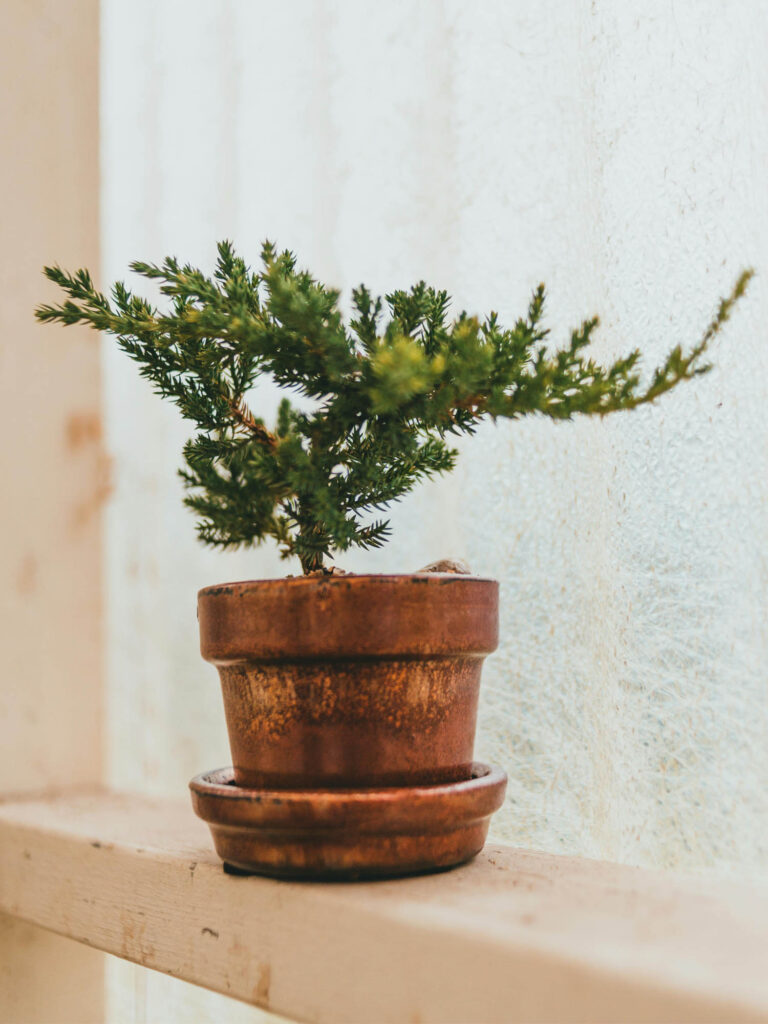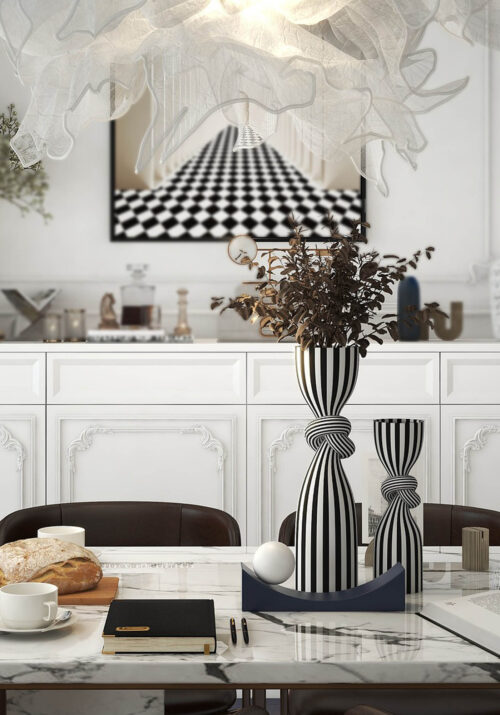In the realm of interior design, personal preferences play a significant role in shaping the ambiance of a space. While many homeowners embrace the lushness of indoor plants and trees, others may have reservations.
As an interior designer, I understand that greenery isn’t everyone’s cup of tea. However, I’ve come to appreciate the transformative power of strategically placed foliage, especially when it aligns with personal tastes.

Finding Balance: The Role of Greenery in Home Decor
For those who, like me, are not avid fans of greenery in the home, finding balance is key. While I may not gravitate towards an abundance of plants indoors, I do recognize the impact that a well-chosen piece of greenery can have on a space.
In particular, I’ve found that a single statement plant, such as a towering tree in an extra-large outdoor planter, can serve as a captivating focal point, adding a touch of drama and sophistication to outdoor living areas.
Less is More: A Minimalist Approach to Greenery
In my design philosophy, less is often more. While some may opt for an abundance of indoor plants to create a lush oasis, I believe that a restrained approach can be equally impactful. In a living room, for example, I find that one carefully selected greenery piece is sufficient to infuse the space with life and vitality, without overwhelming the senses.
Bedroom Sanctuaries: A Personal Pet Peeve
While greenery has its place in many areas of the home, I draw the line at placing plants in bedrooms. For me, the bedroom is a sanctuary—a place of rest and relaxation—and the presence of greenery can feel disruptive to that sense of tranquility.
While I appreciate the benefits of indoor plants, such as air purification and mood enhancement, I prefer to keep the bedroom free from foliage, allowing for an uncluttered and serene environment conducive to restful sleep.

Personal Preferences in Design
In the world of interior design, there are no hard and fast rules. Personal preferences vary widely, and what works for one homeowner may not resonate with another. While I may not be a fan of greenery in the home, I recognize its potential to enhance the beauty and livability of a space for those who appreciate it. Ultimately, the key is to create a home environment that reflects your unique tastes and lifestyle, whether that includes an abundance of indoor plants or a more minimalist approach to greenery.
Here’s a list of indoor trees and plants that are known for their imposing size and can make a significant statement in a home:
Fiddle Leaf Fig (Ficus lyrata): This tree is famous for its large, glossy leaves and can grow several feet tall, making it a striking focal point in any room.
Bird of Paradise (Strelitzia reginae): With its large, banana-like leaves and tall, upright growth habit, the Bird of Paradise adds a touch of tropical elegance to interiors.
Rubber Plant (Ficus elastica): The Rubber Plant is known for its broad, shiny leaves and can grow into a substantial tree with proper care, making it ideal for adding a dramatic presence to living spaces.
Monstera Deliciosa: Also known as the Swiss Cheese Plant, the Monstera Deliciosa features large, fenestrated leaves that add texture and interest to any room. It can grow quite large when provided with ample space.
Yucca (Yucca elephantipes): Yucca trees are characterized by their long, sword-like leaves and can grow into tall, tree-like specimens indoors, making them an impressive addition to larger spaces.
Dracaena Marginata: This tall, slender plant features long, sword-shaped leaves with red edges and can grow into a sizable tree-like form, adding vertical interest to interiors.
Kentia Palm (Howea forsteriana): Known for its graceful, arching fronds and slender trunk, the Kentia Palm can reach heights of several feet indoors, bringing a touch of tropical beauty to any room.
Weeping Fig (Ficus benjamina): This tree features dense, weeping foliage and can grow into a large, bushy specimen, making it ideal for creating a lush, verdant atmosphere indoors.
Areca Palm (Dypsis lutescens): With its feathery fronds and tall, slender stems, the Areca Palm can grow into a substantial tree indoors, adding a touch of elegance to living spaces.
Dragon Tree (Dracaena draco): The Dragon Tree features bold, architectural foliage and can grow into a tall, tree-like specimen indoors, making it a striking statement plant for larger rooms.
These indoor trees and plants are sure to make a bold impression in any home, adding both beauty and a sense of grandeur to interior spaces.
In conclusion, in the realm of interior design, the incorporation of greenery stands as a personal choice that significantly shapes the ambiance of a space. Whether embracing an abundance of indoor plants or opting for a more minimalist approach, the key lies in creating environments that resonate with individual tastes and lifestyles.
As we explore the array of imposing indoor trees and plants, each specimen offers a bold statement, adding both beauty and grandeur to interior spaces, enriching our living environments in myriad ways.











